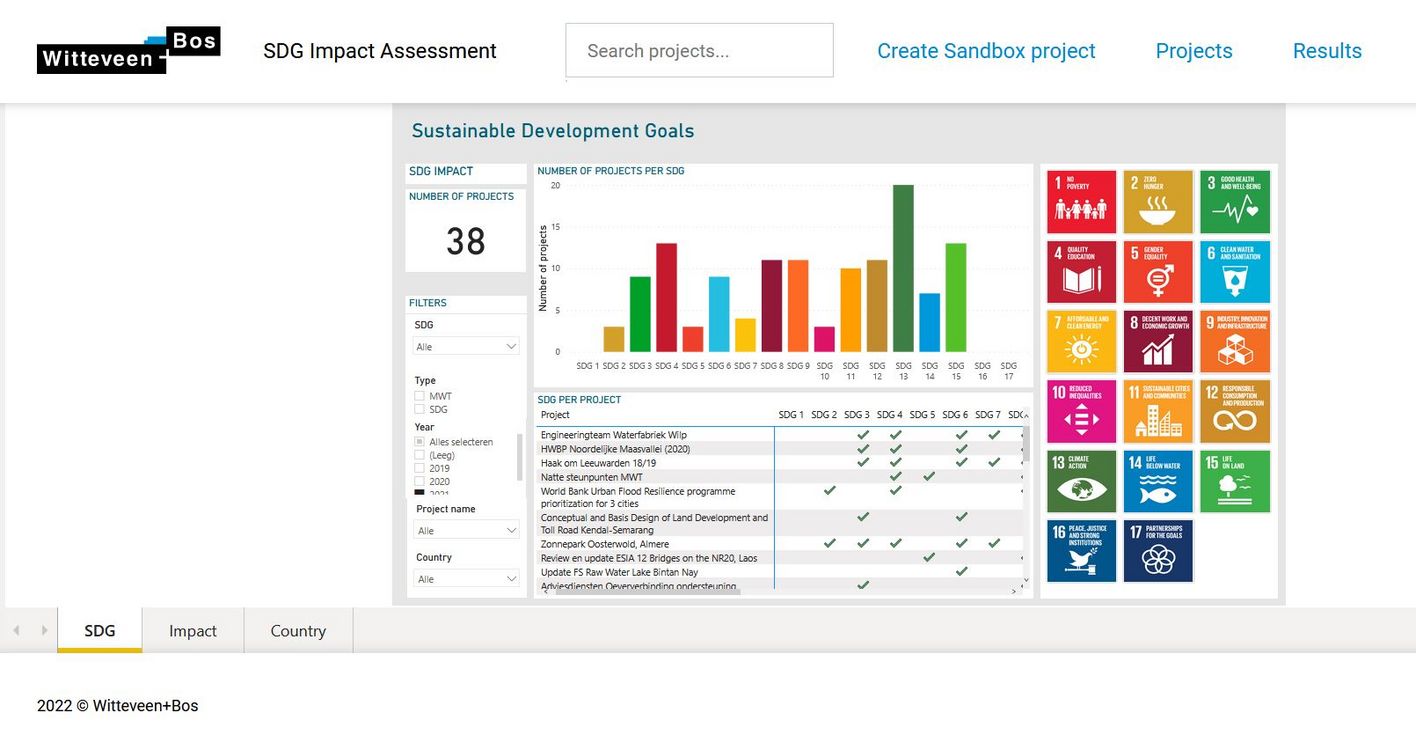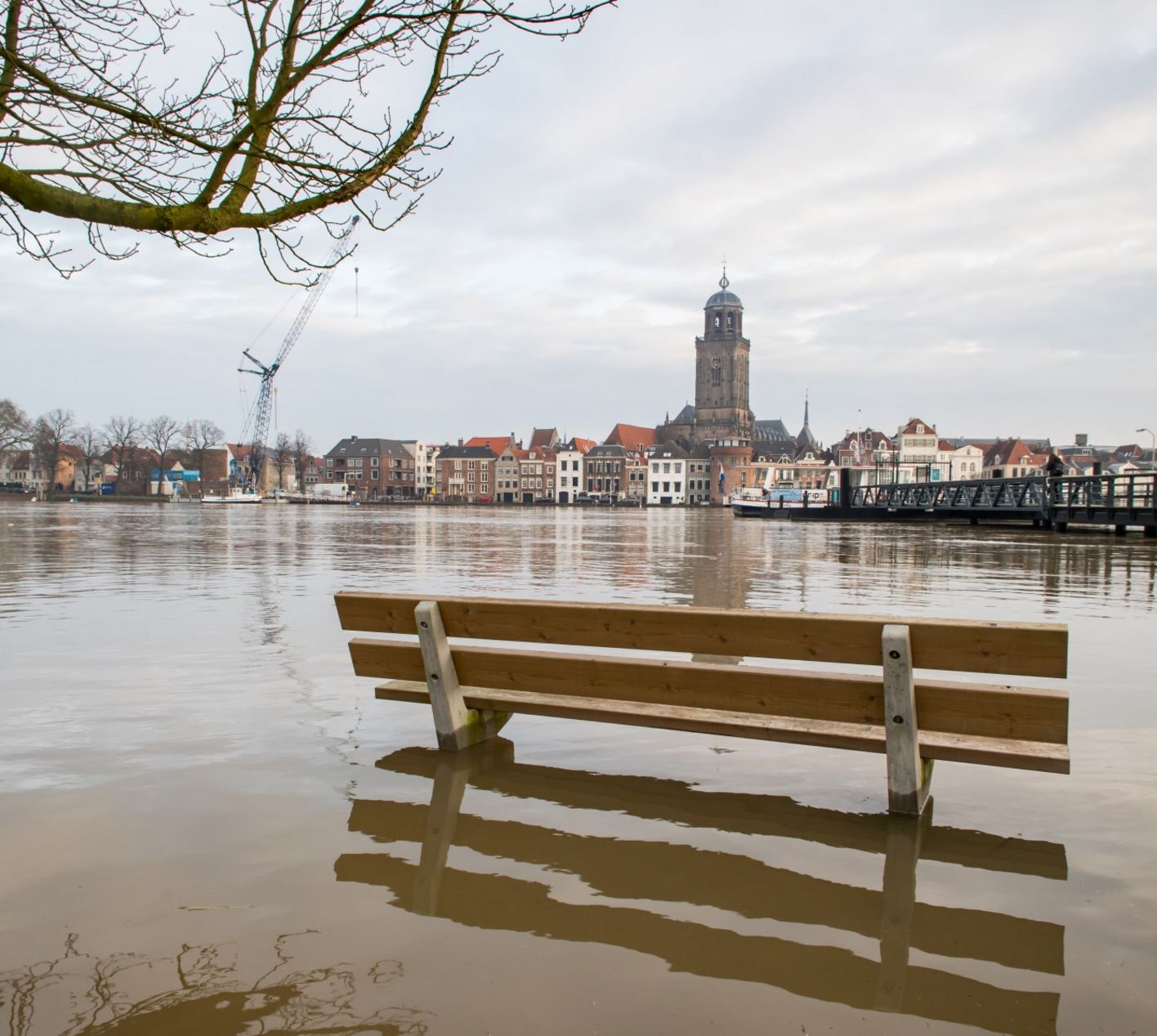Measuring social impact
Witteveen+Bos wants to contribute to the seventeen Sustainable Development Goals (SDGs) of the United Nations (UN) and help achieve a socially, environmentally and economically sustainable world by 2030. In relation to various aspects of our work, we can make a difference by choosing the most impactful projects and determining the best solutions with the most positive social impact. Our Sustainable Design Principles (SDPs) help us do this. In recent years, we also developed tools to measure this social impact, and in 2021 we combined these into a single tool.
Witteveen+Bos’s ambition is to do ‘good’ projects – those that contribute positively to major social issues and create social value. From our materiality analysis, we concluded that we want to pay more attention to climate, biodiversity and equality. With reference to the Sustainable Development Goals (SDGs), this means we want to pay extra attention to four SDGs: 10. Reduced inequalities; 13. Climate action; 14. Life below water; and 15. Life on land. In 2021, we worked on policy objectives in these areas and improved tooling to help achieve them. In 2022, we will be defining this new policy.
Witteveen+Bos has developed its own SDG Impact Tool to gain insight into the social value we create through our projects. In 2021, we measured the contribution to the aforementioned SDGs of 38 completed projects in various countries, in order to get an impression of what our contribution to the SDGs is. An additional effect of this is that project managers better understand what the impact of their project on the SDGs can be. For the first time, we used a web-based tool for this purpose, designed by a team of Witteveen+Bos colleagues. This made both the scoring and the analysis of the results easier.
Impression of the SDG Impact Tool
Quantifying impact and dilemmas
The results of the projects that we randomly selected from different revenue categories give an impression of our performance and also reveal how we score on the SDGs we want to pay extra attention to. Of the 64 randomly selected projects, a number proved unsuitable for assessment. Secondment projects, some research projects, or projects that measure odour, for example, do not have an impact on the SDGs. In the end, 38 projects were left that could be assessed. The results are not sufficiently representative to judge the overall impact of Witteveen+Bos’s more than 4,500 projects. The method of quantification and the dilemmas we encounter as a result, however, are relevant. We would like to share these using the results of the 38 projects that were assessed.
Three projects scored positively on SDG 10 (Reduced inequalities): In one project, someone removed from the labour market was helped to find a job. In another, the construction of an asylum seekers’ centre was made possible. As a result of the third project, jobs were created in an extremely poor area. None of the projects assessed had a negative impact on SDG 10.
We quantify impact on SDG 13 (Climate action) using two criteria: our projects’ CO2 emissions and the number of people protected from flooding as a result of our designs and advice. Because all 38 projects generate CO₂ emissions, the total CO₂ impact of the projects is negative. These emissions include those that other chain parties, such as contractors and end users, emit following the implementation of our advice and designs (i.e. downstream scope 3 emissions) – for example, through the choice and use of materials. Through our designs and advice, and also through the projects we choose to do, we have an influence on these emissions. Witteveen+Bos has not yet found a uniform method for quantifying its project emissions. Because project emissions cannot yet be quantified, the results of our tool currently provide a distorted (and too positive) picture. Regarding the second criterion, people were protected from flood risks in fifteen of the 38 projects.
Six projects contributed positively to SDG 14 (Life below water) by improving the quality of treated waste water (effluent) discharged to the sea, and by reducing underwater disturbance. Two projects scored negatively on SDG 14 due to negative impacts on marine flora and loss of mangrove forests.
For the assessment of SDG 15 (Life on land), we look at the protection of ecosystems; the elimination of disturbances; the increase or decrease of greenery, forestland and fresh water; and ecological connectivity. Nine projects could be said to have had a positive impact on SDG 15 through the development of natural areas, the improvement of water quality, the design of green links, the combating of forest clearing, or the development of water retention measures. Two of the 38 projects had a negative impact on SDG 15, owing to the disappearance of mangrove forest along the foreshores of a bay and the disturbance of the natural environment due to the impact of dredging activities.
Many Witteveen+Bos employees are driven to contribute to a sustainable society and to provide maximum social value. Despite this, scoring the projects with the SDG Impact Tool revealed that, in many cases, the possible SDG impact of projects was only considered following completion. This currently makes it difficult to retrospectively quantify Witteveen+Bos’s impact on the project.
Conclusion and look ahead
Scoring projects with Witteveen+Bos’s SDG Impact Tool currently contributes to increasing awareness of the SDGs among employees but does not yet offer a complete picture of our impact. In 2022 and the years to come, we will be more explicitly considering and committing to maximising social value with clients and be measuring increasingly more projects. In order to establish clear goals, in 2022 we are going to determine how and how much we want to contribute to the highlighted SDGs – by choosing the ‘right’ projects with the most positive impact, and by avoiding or mitigating negative impact within projects.

